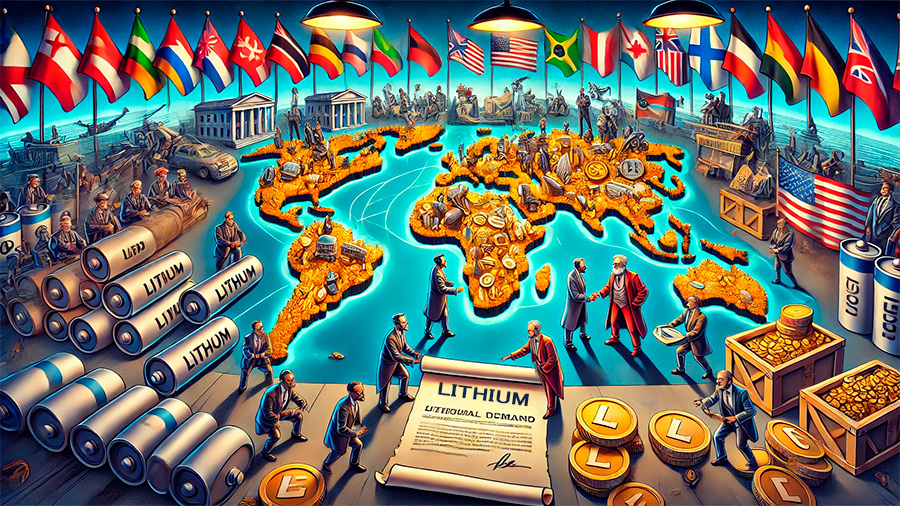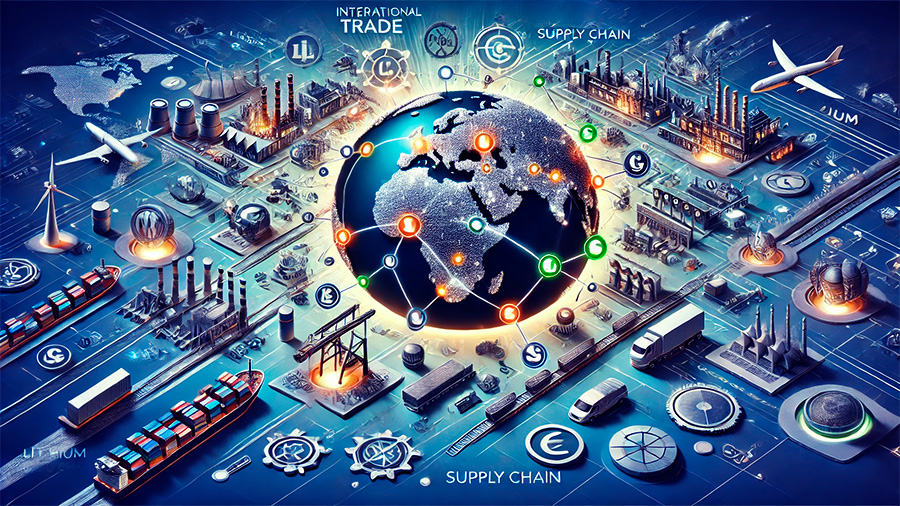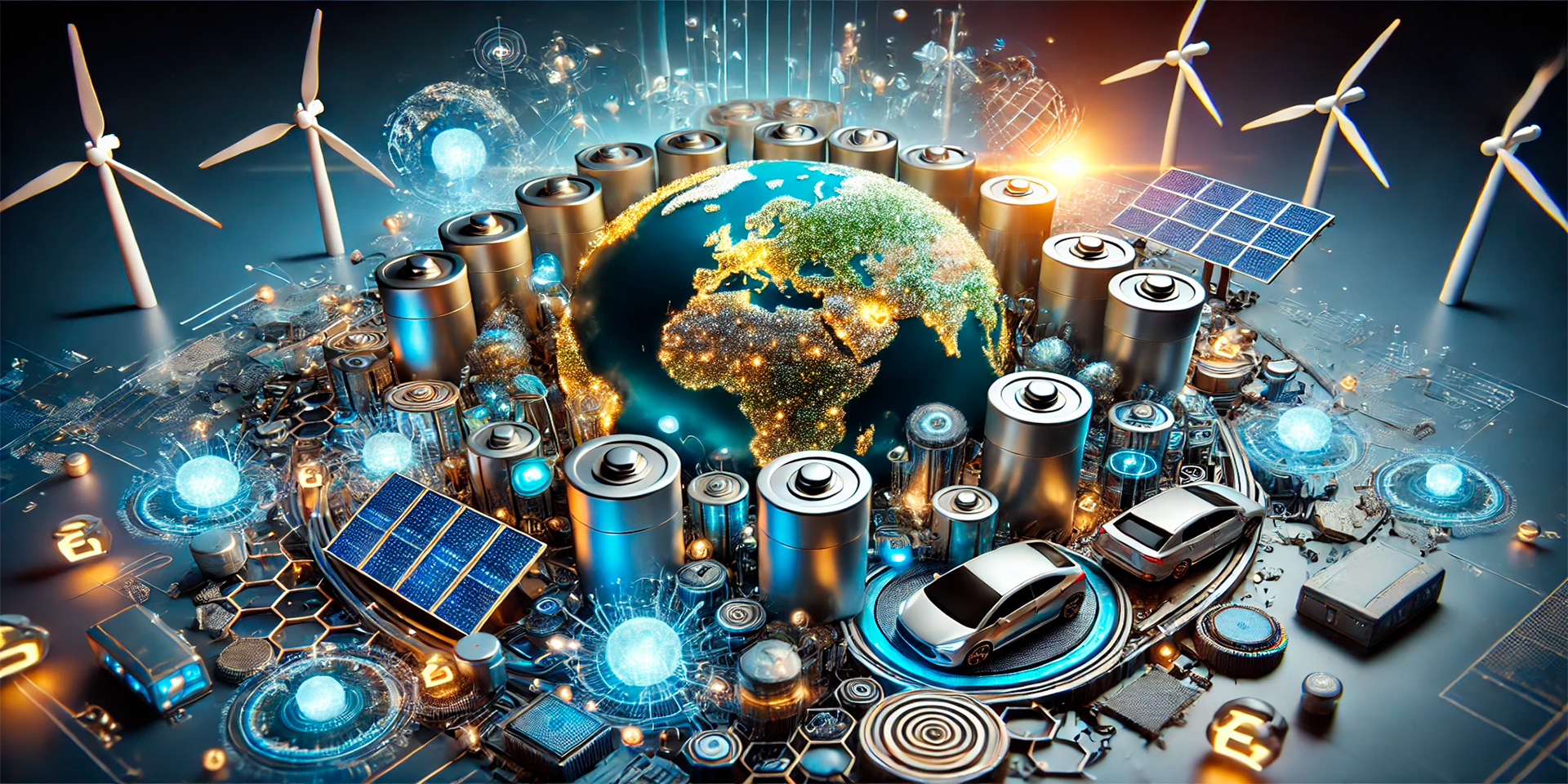As the world transitions to cleaner energy sources and electric vehicles (EVs), the demand for lithium has skyrocketed. Lithium, a key component in the production of rechargeable batteries, has become a strategic resource in the global economy. The increasing reliance on renewable energy storage, electric vehicles, and other technologies that require lithium-ion batteries has triggered a fierce competition among countries to secure access to this critical resource. This article explores the market trends driving the global demand for lithium, the policies shaping its production, and the geopolitical implications of this growing competition.
The Rising Demand for Lithium
Lithium is often referred to as the “white gold” of the energy transition due to its essential role in powering the clean energy technologies of tomorrow. The global demand for lithium has surged in recent years, driven primarily by the electric vehicle (EV) market, where lithium-ion batteries are used to power everything from cars to buses. Additionally, lithium is used in grid storage systems to store renewable energy, making it integral to the growth of solar and wind energy worldwide.
1. Electric Vehicle Revolution
The rapid growth of the electric vehicle market has been one of the primary drivers behind the increased demand for lithium. Governments around the world are setting ambitious targets for electric vehicle adoption, as part of their efforts to reduce carbon emissions and transition to cleaner energy sources. EVs require large quantities of lithium-ion batteries, which has created a massive demand for lithium.
How lithium supports the EV market:
- Battery technology: Lithium-ion batteries are more efficient and longer-lasting than other battery types, making them the preferred choice for powering electric vehicles.
- Government incentives: Many countries are offering incentives for EV purchases, further boosting the demand for electric vehicles and, by extension, lithium.
- Automaker commitments: Major automakers, such as Tesla, GM, and Volkswagen, have committed to producing EVs in large quantities, contributing to the surge in lithium demand.
2. Renewable Energy Storage
In addition to the electric vehicle market, lithium is crucial for energy storage systems that help balance the supply and demand of renewable energy. As solar and wind power generation increases, so does the need for efficient energy storage solutions to ensure that the energy can be used when it is needed most. Lithium-ion batteries are widely used for storing energy generated from renewable sources, driving the demand for lithium in this sector.
The role of lithium in renewable energy storage:
- Grid-scale storage: Lithium-ion batteries are increasingly used in large-scale storage systems, ensuring that excess renewable energy can be stored and dispatched when needed.
- Decentralized storage: Lithium batteries are also used in residential and commercial energy storage systems, allowing consumers to store solar energy for later use.
- Storage efficiency: Lithium-ion batteries are lightweight and highly efficient, making them ideal for energy storage applications where space and efficiency are critical.

Geopolitical Implications of Lithium Demand
As lithium becomes more integral to global industries, the competition for lithium resources has intensified. Countries with large lithium reserves or significant lithium production capabilities are now at the center of the global energy transition. Geopolitical competition for access to lithium resources has led to strategic partnerships, international investments, and shifts in trade policies.
1. Key Lithium Producers and Their Strategic Importance
Currently, the largest lithium-producing countries are Australia, Chile, China, and Argentina, with these nations controlling a significant portion of the world’s lithium reserves. The competition for lithium mining rights has prompted these countries to implement various policies to safeguard their resources and attract foreign investment.
Major lithium producers:
- Australia: Australia is the largest global producer of lithium, primarily through its hard rock mining operations. The country’s stable political environment and advanced mining infrastructure have made it an attractive destination for international investors.
- Chile: Chile holds one of the world’s largest lithium reserves and produces lithium through brine extraction. The country is part of the “Lithium Triangle” along with Argentina and Bolivia, which is rich in lithium-rich salt flats.
- China: While China does not have the largest lithium reserves, it is a dominant player in the lithium market due to its extensive refining capabilities and control over the global supply chain. China has also invested heavily in lithium mining projects in other countries.
- Argentina: Argentina, along with Chile and Bolivia, is part of the Lithium Triangle in South America. Argentina is expanding its lithium production and attracting foreign investment to meet the growing demand.
2. National Policies and Regulations
To protect their lithium reserves and maximize economic benefits, countries with substantial lithium resources are implementing policies that regulate exploration, mining, and exportation. Some countries have introduced nationalization policies, while others have signed international trade agreements to secure access to foreign markets.
Examples of national policies:
- Chile’s lithium nationalization proposal: Chile has debated nationalizing its lithium industry, which would allow the government to directly control lithium extraction and production, ensuring that the country benefits more from its natural resources.
- China’s strategic investments: China has invested heavily in lithium mining projects worldwide, securing long-term access to the resource. Additionally, China has developed a robust lithium supply chain, from mining to battery production.
- Argentina’s investment incentives: Argentina has created favorable policies to attract foreign investment in its lithium sector, offering incentives for companies to develop mining projects in the country.

International Trade and the Lithium Supply Chain
The growing demand for lithium has prompted many countries to create trade policies that promote lithium extraction and trade. As lithium is a critical resource for industries such as electric vehicles and renewable energy, the global lithium supply chain has become increasingly competitive, with countries vying to secure their positions in the market.
1. Trade Policies and Agreements
Countries are signing trade agreements to ensure the smooth export and import of lithium and lithium-related products. Bilateral and multilateral agreements are being forged to promote the sharing of lithium resources, technologies, and expertise between lithium-rich countries and those in need of the resource.
Trade policies shaping the lithium market:
- China-Australia lithium trade: China is Australia’s largest trading partner for lithium, with significant exports of lithium ore and concentrates flowing from Australia to China for refining.
- U.S.-South America partnerships: The U.S. has entered into trade agreements with countries like Argentina and Chile to secure a stable supply of lithium for its growing electric vehicle and renewable energy markets.
- European Union’s role in lithium supply: The European Union is seeking to develop its lithium mining capacity to reduce dependence on foreign sources, while also fostering international partnerships to secure access to lithium.
2. The Future of Lithium Mining
As the demand for lithium continues to grow, the future of lithium mining will depend on the successful development of new mining technologies, the ability to manage environmental impacts, and the willingness of governments to collaborate on global solutions. Striking a balance between sustainable mining practices and ensuring the global supply of lithium will be critical for meeting future energy demands.
Future trends in lithium mining:
- New mining technologies: Advances in mining technologies, such as direct lithium extraction, could make lithium production more efficient and environmentally friendly.
- Environmental concerns: Lithium mining has raised environmental concerns, particularly in water-scarce regions. The industry is exploring ways to minimize its environmental footprint through more sustainable practices.
- Increased recycling: Recycling of lithium from used batteries is expected to play a larger role in meeting future demand, reducing the need for new mining operations.
Conclusion
The global competition for lithium is reshaping international trade and market dynamics as the demand for this critical resource continues to rise. Governments around the world are implementing policies and forming strategic partnerships to secure access to lithium, which is essential for powering electric vehicles, renewable energy storage, and other cutting-edge technologies. As the race for lithium intensifies, it will be crucial for countries to balance economic interests with environmental sustainability to ensure that the growing demand for lithium can be met in a responsible and equitable way. By understanding the market trends and policy shifts surrounding lithium, investors and governments can better navigate the evolving global landscape and capitalize on the opportunities presented by this vital resource.

